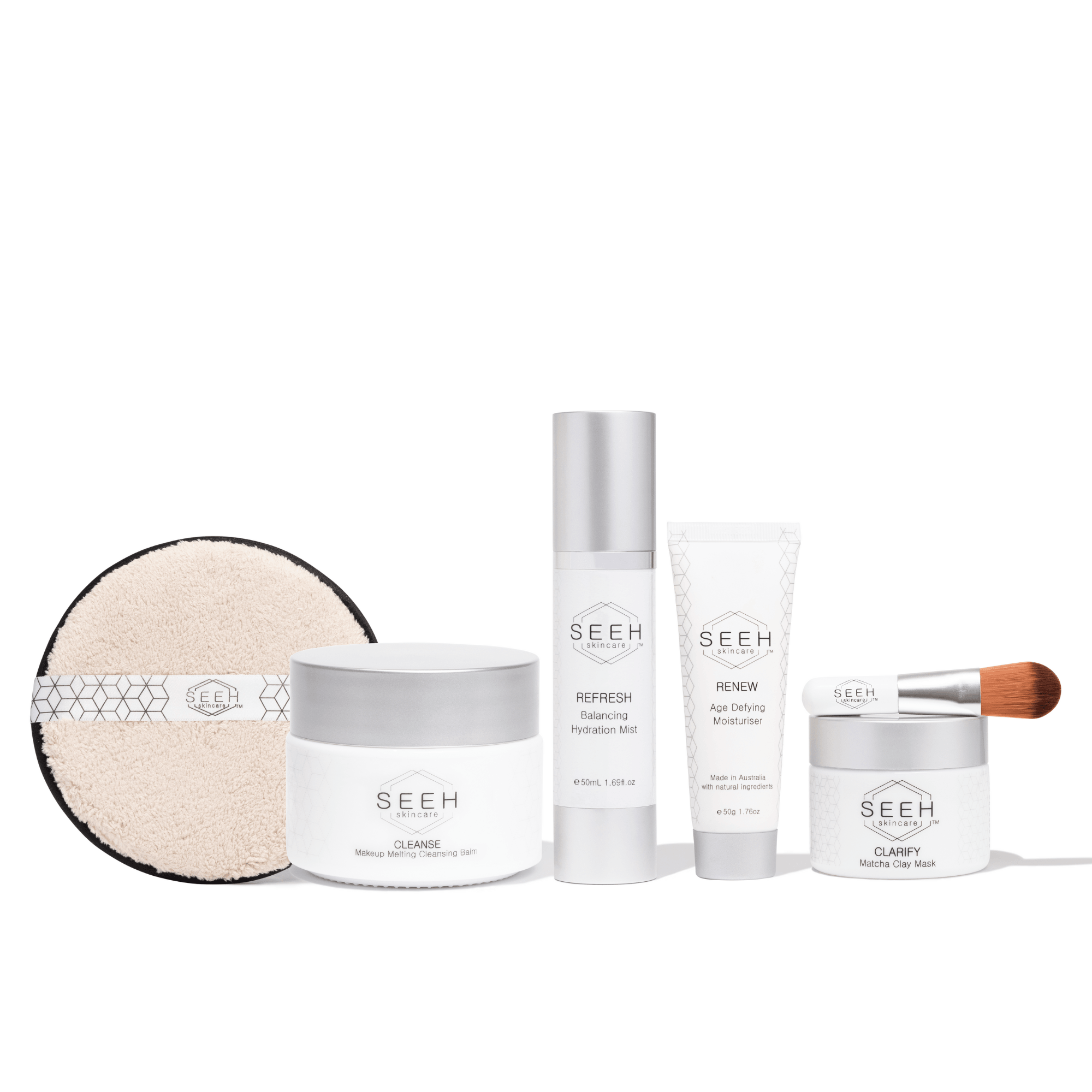No matter the season, the weather, your skin tone, or if you spend more time inside than out: applying sunscreen, every day, is a must. A simple, daily SPF habit will have a profound effect on your skin’s vitality and how well it ages in the years to come.
A fast track to premature signs of ageing (..and worse)
Ultraviolet (UV) rays cause DNA changes at a cellular level in the skin. UV damage is responsible for up to 90% of the signs of premature ageing. Known as photo ageing, sun damage occurs deep in the dermis and accumulates over time; it can take years before the damage becomes visible on the surface.
There is absolutely no doubt about it, sunscreen is THE best anti-aging skincare product for your skin.
Unhealthy sun exposure can:
1. Cause age spots and exacerbate existing hyperpigmentation
The sun's rays can make existing hyperpigmentation worse by stimulating the production of melanin (the skin’s pigment) which leads to darker, longer lasting marks.
The surge of melanin caused by UV rays also produces age spots; small, flat dark areas on the skin.
2. Increase risk of skin cancer
More concerning than photoageing is the risk of developing skin cancer, including melanoma, which can be fatal. Melanoma is the leading cancer diagnosis in young Australians aged between 15-29 years.
3. Destroy collagen and elastin fibres
Collagen gives your skin structure and strength while elastin gives it stretch and bounce. They are, quite literally, the foundation for healthy, youthful looking skin.
UVA rays penetrate deep into the skin and damage the fibres of collagen and elastin. Over time, this can lead to fine lines, wrinkles, and sagging skin.
4. Weaken the skin barrier
UV radiation and sunburn can compromise your skin barrier leaving skin feeling dry, tight, and uncomfortable.
UVA and UVB explained
The sun’s ultraviolet (UV) radiation falls into two categories: UVA rays and UVB rays.
Both damage the skin but do so in different ways.
UVA
You can blame UVA rays for the visible signs of premature ageing! They are long rays that penetrate deeply into the skin where they damage collagen and elastin fibres. This results in wrinkles, fine lines and sagging.
UVB
UVB are shorter rays and are strongest in the middle of the day. These rays are responsible for the surface damage - the burning and visible redness of a sunburn - and can cause melanoma.
Overcast days and being indoors isn’t an excuse to skip sunscreen; clouds don’t block UV rays and UVA can penetrate windows, too.
Physical (mineral) sunscreen vs chemical sunscreen: What’s the difference?
Now let's talk about sunscreens. There are two main types: physical (mineral) and chemical and both protect your skin in a different way.
Physical sunscreen - reflects UV rays
Containing active ingredients like zinc oxide or titanium dioxide, these sunscreens physically block the harmful rays. The active ingredients sit on the surface of your skin and reflect the sun's rays away from your skin. They essentially create a physical barrier between the UV rays and your skin.
Physical sunscreens are less likely to irritate. This makes them a good choice if you have sensitive skin. However the physical barrier can be problematic for people with oily and acne prone skin, so removing thoroughly with a cleanser at the end of the day is vital.
Chemical sunscreen - absorbs UV rays
Rather than reflecting, chemical sunscreen protects your skin by absorbing the rays before they penetrate into your skin. Chemical sunscreen are absorbed into the skin, and this is why their formulas usually feel lighter and apply easier than mineral options. To achieve broad spectrum protection, chemical sunscreens often contain multiple active ingredients which can result in a reaction if you have sensitive skin.
Look out for a common ingredient in physical sunscreen called oxybenzone which may cause irritation and is a possible endocrine disruptor.
So which is better?
So long as you choose a broad-spectrum sunscreen which protects your skin from UVA and UVB, the best sunscreen is really the one you are going to reach for and wear consistently every day. Its as simple as that.
Sunscreen with your SEEH routine
Every single morning, after applying NOURISH Superfood Facial Oil or RENEW Age Defying Moisturiser, follow with a 50+ SPF sunscreen of your choice. Continue to reapply throughout the day as directed.
A few of our favourites:
We also suggest to touch-up your sunscreen throughout the day, without risking your makeup, with a powdered mineral sunscreen or mist.
Get your sunscreen habit started! Prevention is always better than the cure.
Kim xx






































































